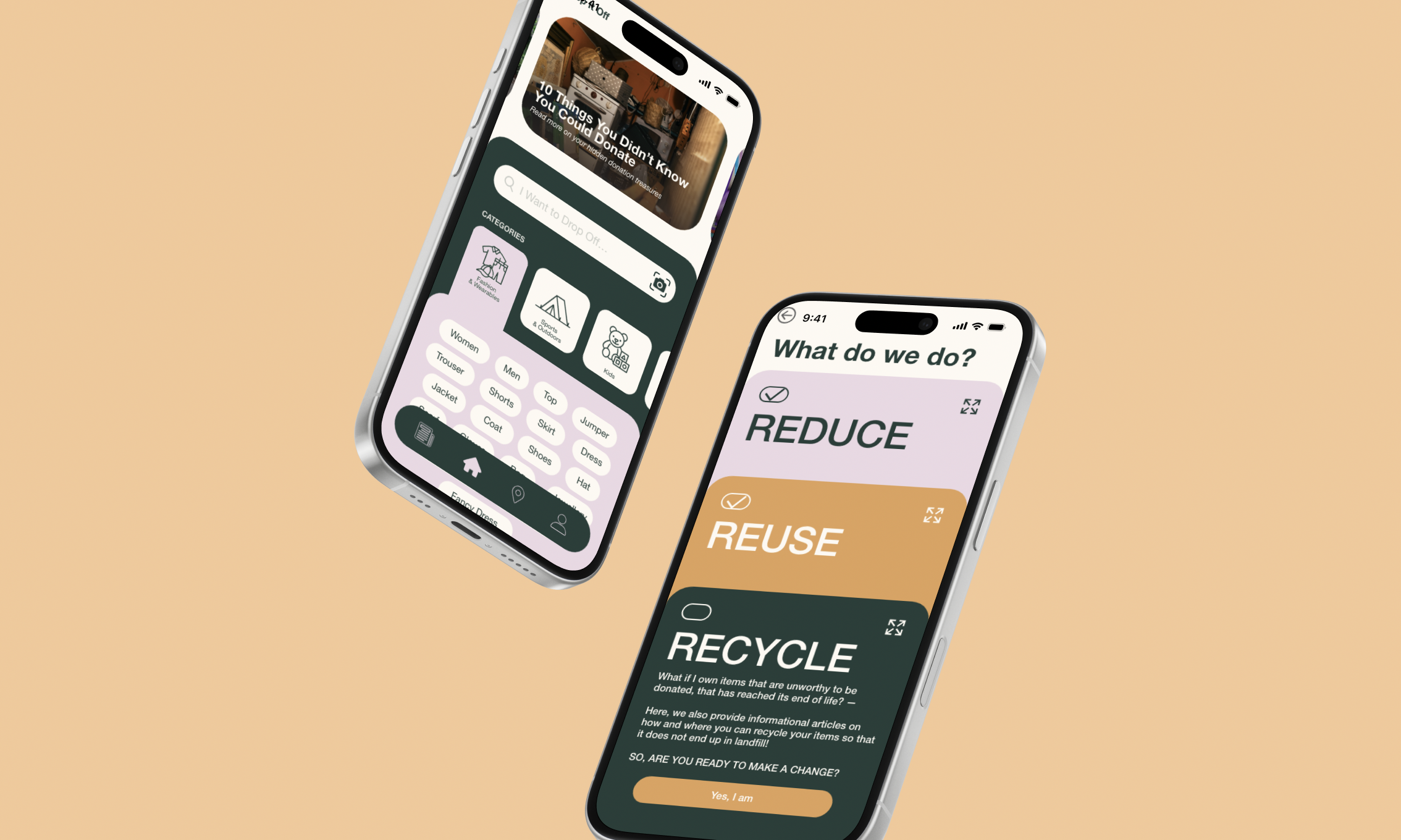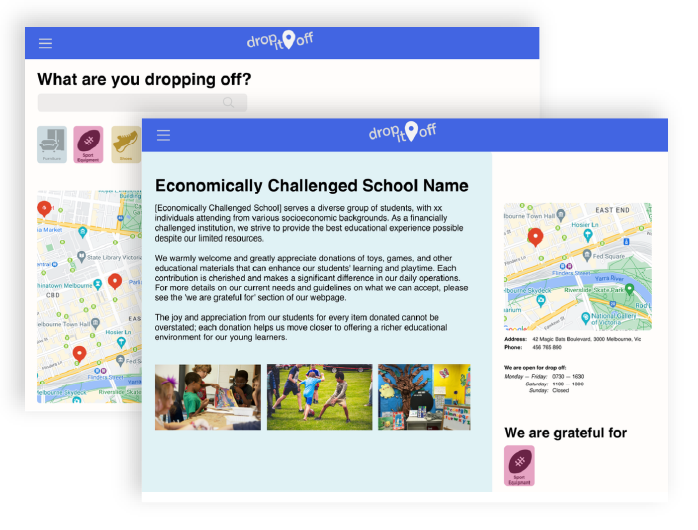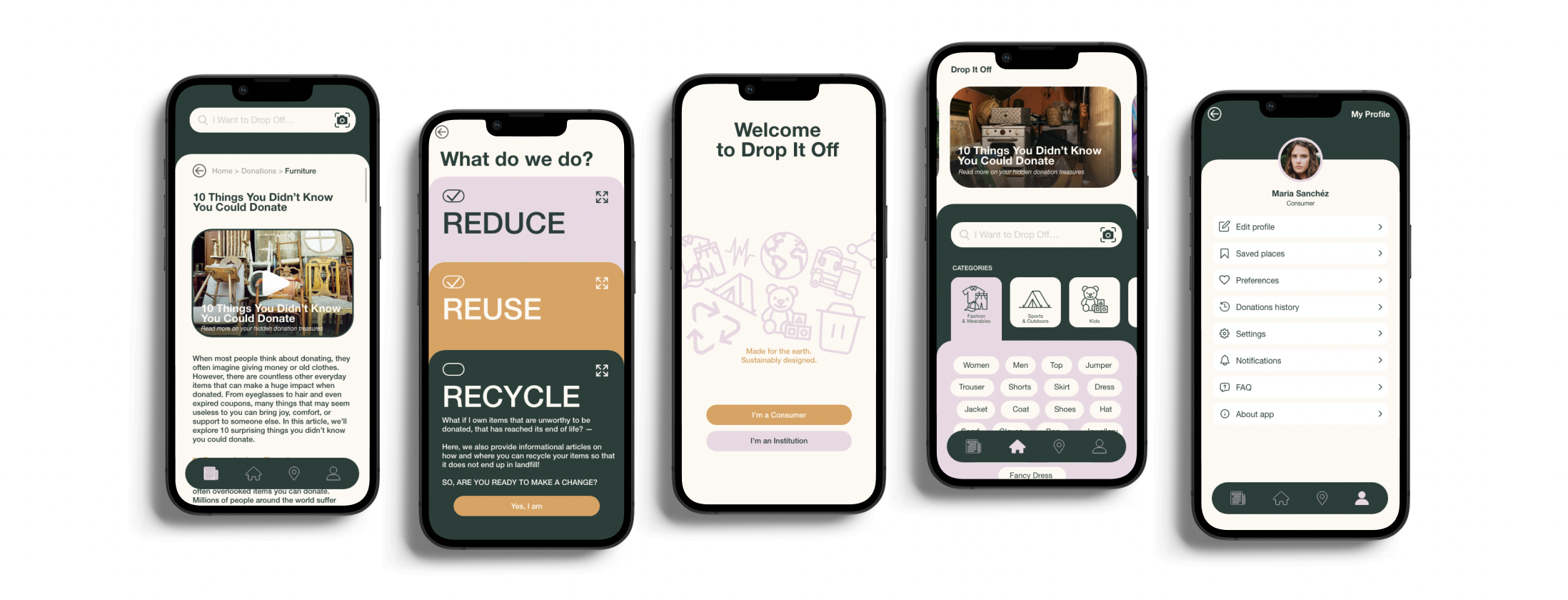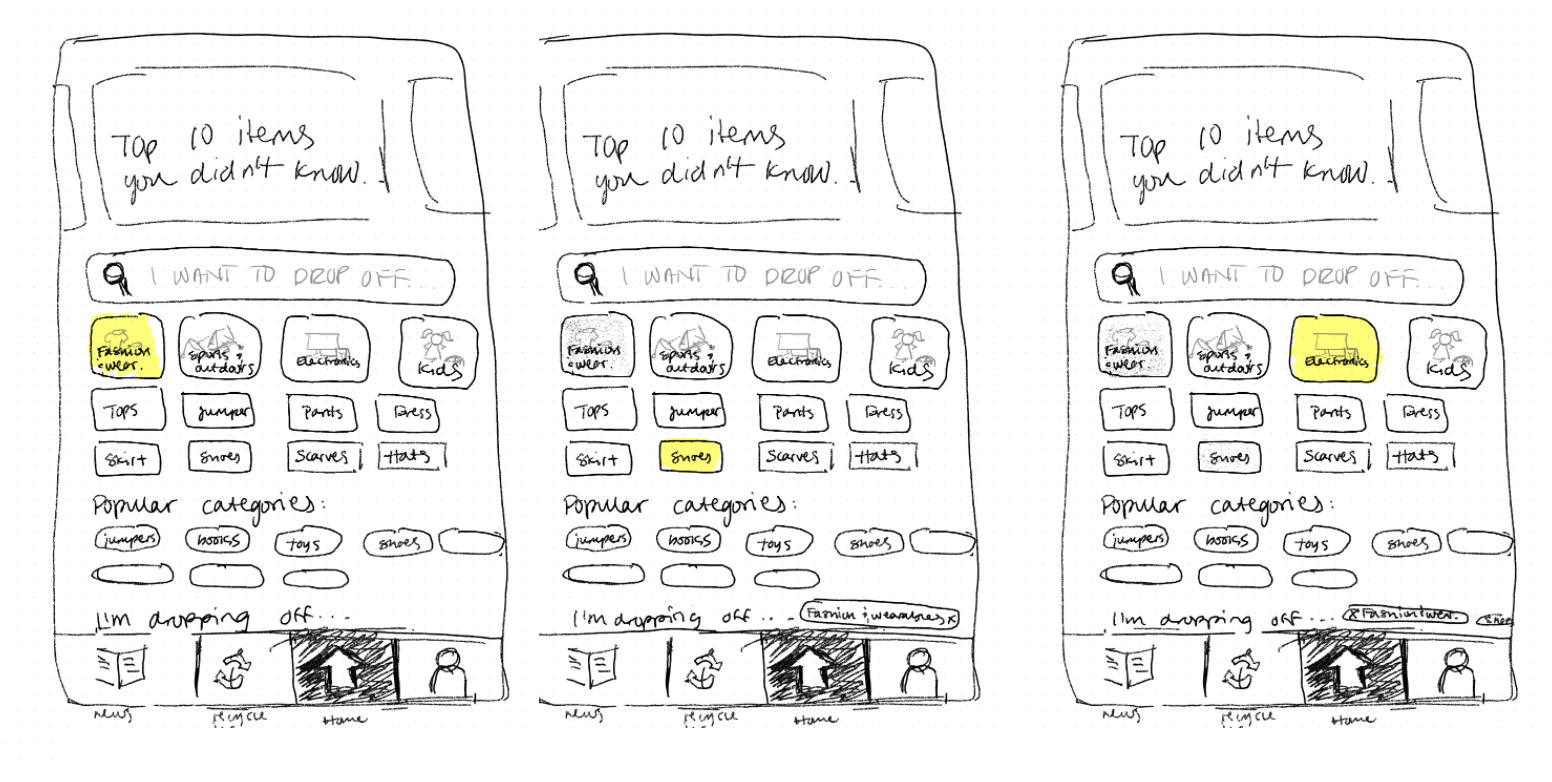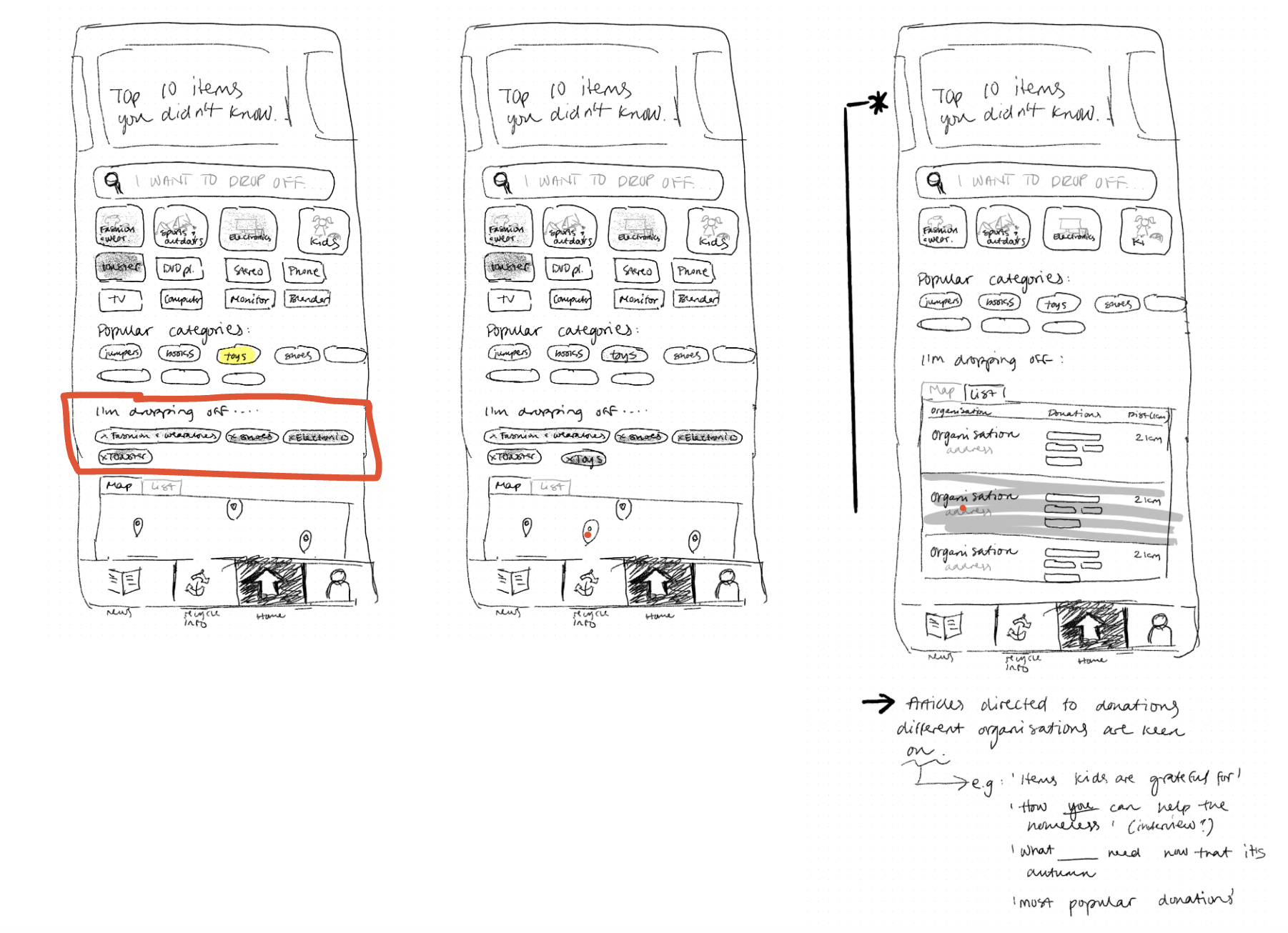UX Case Study
Drop It Off
Streamlining the Donation Process to Reduce Consumer Waste
Project Overview
Project Type: University Capstone Project
Project Timeline: 2024 - 14 weeks
Group Size: 5 Students
My Role: UX Researcher | UI Designer
Tools Used: AdobeXD, Miro
Outcome: High Fidelity Prototype of Mobile App
The Problem
Reduce, Reuse Recycle. We’ve heard it all before. But how many of us have the time or information to do so effectively? With a growing culture of consumerism, consumer waste is a concerning issue that we decided to tackle, and it started by answering this very question.
From surveys and user research, we found that while many individuals and businesses want to donate their unwanted items, they often lack the time, information, or motivation to do so. Charities, on the other hand, struggle with an overflow of irrelevant donations while also lacking the resources to sort and distribute them effectively.
This created a stakeholder paradox—while donors and charities share a goal of reducing waste, inefficiencies in communication and logistics lead to excess landfill waste.
Pain Points
Consumers Lack the time or knowledge of where to drop off items.
Charities Receive too many irrelevant donations, creating logistical burden.
Resale Platforms Require too much manual effort for users to list items
Understanding Those Impacted
To fully understand the problem space of consumer waste and donation inefficiencies, we identified 5 key stakeholder groups in order to map out key influences within the industry:
Donors who wish to give away their items or consumers
Charity workers who want to focus on their primary duties without being overwhelmed by
the logistics of donations
People in need who require these goods
Circular Economy Services which act as a platform to store and exchange the ownership
of unwanted items to those who needs or wants it more, and
Retail Industries which produce all these consumer goods and will persuade people to
continuously buy new items as they do not want to lose customers to make profit.
To better understand these influences, we conducted user interviews with 6 participants from 3 of these groups. This allowed us to develop an overview of various users’ wants and needs, and how they might clash or compliment each other.
Rich Picture identifying complimentary and clashing stakeholder wants and needs based on presumed and observed research.
💡 Key Insights from Interviews:
Consumers struggle with uncertainty - they don’t always know whether their items can be donated, where to donate, or if it’s even worth donating.
Time commitment is a major barrier - many participants admitted they often threw away usable items because donation drop-offs were inconvenient.
Charities are overwhelmed - NGOs often receive too many donations at once, many of which are unsuitable (e.g. damaged goods).
Retail brands lack transparency - some brands market themselves as sustainable but don’t provide clear information on how much donated/recycled material is actually reused, leading to mistrust.
These insights directly shaped our design decisions, leading us to prioritise ease of use, transparency, and efficiency in our solution.
💁♀️ Personas
Initial Idea Iterations
Once we had a deeper understanding of the problem space, it was time to brainstorm solutions. We wanted to explore a broad range of ideas to ensure we considered all avenues.
We developed 5 quick mid-fidelity prototypes of potential ideas and conducted user testing through surveys and interviews with 5 stakeholders. Our survey results allowed us to develop our final solution, which was a combination of 3 of our ideas that were found to be the most useful and relevant to users.
How To Trash - An educational wiki to teach users how to responsibly dispose of or donate unwanted items.
SecondScan - An AI based scanner that identifies if an item is suitable for donation or reselling based on its state of wear.
User Insights -
The Solution
A digital platform that connects donors with charities that need specific items, making the process fast, transparent, and sustainable.
Drop It Off - A map-based interface that connects users with unwanted items to donation centres in need of those items
Key Features
Mid-Fidelity Prototypes – Interactive screens in Adobe XD for usability testing.
Smart Drop-off Finder
Users enter the items they want to donate, and the app suggests nearby donation centres actively seeking those items.
AI-Powered Scanning
Users can scan an item to determine if it should be donated, sold, or recycled depending on its level of wear and usage.
Educational Content
Articles on sustainable waste management and donation best practices for users to educate themselves on sustainability.
Design Process
Low-Fidelity Prototypes – Paper sketches & wireframes to explore user flows.
High-Fidelity Prototypes – Polished UI with branding and accessibility considerations.
